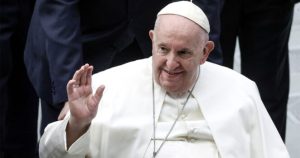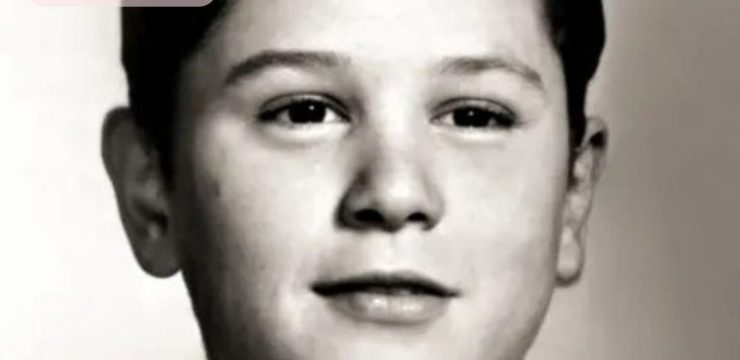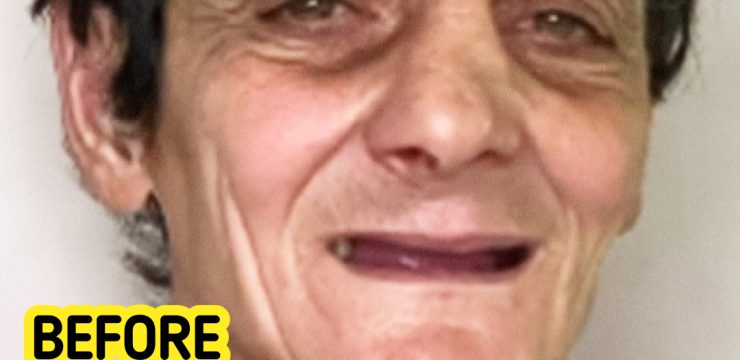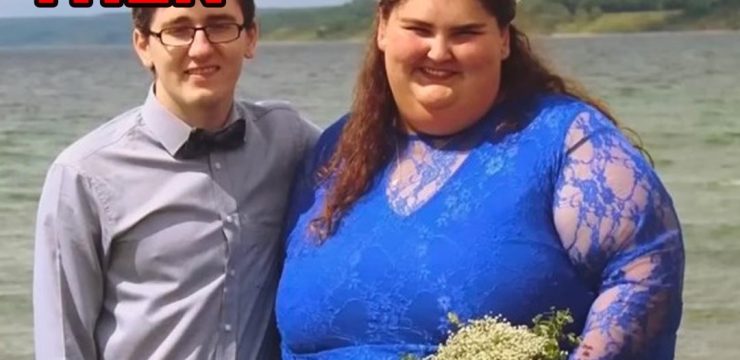This morning, the world awoke to the heartbreaking news of Pope Francis’s passing. On Easter Monday, one of the most sacred and significant days in the Christian calendar, the Vatican confirmed that the beloved leader of the Catholic Church had died. The announcement, made just as the global Christian community was reflecting on the themes of resurrection and hope, sent shockwaves through millions of hearts around the world.

The death of Pope Francis marks the end of an era. Known for his humility, compassion, and bold stances on social justice, Pope Francis had long been a symbol of faith and moral clarity in a rapidly changing world. His papacy touched the lives of Catholics and non-Catholics alike. For many, he was a beacon of hope and understanding in turbulent times.
In the days leading up to his passing, hundreds of thousands of pilgrims and faithful followers had flocked to Rome, gathering at the Vatican to celebrate the sacred Easter season. Many of them were present during what would become Pope Francis’s final public appearance—an emotionally charged and symbolically powerful moment that will forever be etched in history.
On Easter Sunday, despite his frail health and ongoing battle with a severe case of double pneumonia, Pope Francis appeared at St. Peter’s Square. Though visibly weakened and confined to a wheelchair, he made a brief but heartfelt appearance from the balcony of St. Peter’s Basilica. His face, though aged and weary, was still lit with the gentle, kind smile that so many had come to know and love.
This Easter marked a significant departure from tradition. Historically, the Pope delivers a full Mass and the iconic “Urbi et Orbi” blessing, which means “To the City and the World.” However, due to his illness, these sacred duties were passed on to Cardinal Angelo Comastri and a high-ranking archbishop, who carried out the ceremonies on his behalf. Tens of thousands of people stood quietly in the square as Cardinal Comastri led the Mass and as the Pope addressed the world for the last time.
In his final Easter message, Pope Francis did not shy away from confronting the difficult realities of the modern world. His speech was deeply moving and carried an urgency that many interpreted as his final plea for peace, unity, and humanity. He condemned the rising wave of antisemitism that has begun to creep into societies around the globe and spoke at length about the humanitarian tragedy unfolding in Gaza.
“I think of the people of Gaza, and its Christian community in particular, where the terrible conflict continues to cause death and destruction and to create a dramatic and deplorable humanitarian situation,” he said, his voice slightly trembling, yet resolute. His words served as a powerful reminder that even in his final days, Pope Francis remained a vocal advocate for the voiceless and the suffering.
Beyond his condemnation of violence and hatred, Pope Francis reiterated a message he had long championed throughout his tenure: the inextricable link between peace and freedom. In his address, he emphasized that peace cannot truly exist without the freedom to practice one’s religion, to speak freely, and to hold differing opinions without fear or persecution.
“There can be no peace without freedom of religion, freedom of thought, freedom of expression, and respect for the views of others,” he declared to the tens of thousands gathered below the balcony. The crowd listened in silence, deeply aware of the gravity of his words and the rare opportunity to witness a final blessing from the pontiff.
After the address, Pope Francis was driven through the crowd in an open-top vehicle. Although physically fragile, he waved to those in attendance, offering smiles and hand gestures of blessing. It was a bittersweet sight—one that merged the joy of Easter with the sorrow of impending loss. The Pope, ever committed to his people, used every ounce of strength to offer comfort and connection one last time.
He passed away at the age of 88, after several months of declining health. Just four weeks earlier, Pope Francis had been released from Rome’s Gemelli Hospital, where he had spent nearly a month receiving treatment for his illness. Though he had made some recovery, doctors had cautioned that his condition remained delicate, and he would need extensive time to rest and recuperate.
Throughout the last year, Pope Francis’s health had been a growing concern. For the first time since he was elected to the papacy in 2013, he missed the majority of Holy Week events. The Holy Week, which commemorates the final days of Jesus Christ leading up to his crucifixion and resurrection, is typically one of the busiest and most sacred periods in the Catholic calendar.
This year, due to his weakened condition, the Pope was unable to attend several key ceremonies, including the Stations of the Cross at the Colosseum and the Easter Vigil at Saint Peter’s Basilica. These responsibilities were handed over to cardinals, many of whom had long served alongside him and knew his values and vision intimately. His absence was felt deeply among the faithful, many of whom had traveled from afar hoping to witness the Pope’s presence during these holy moments.
Even the foot-washing ceremony on Holy Thursday—an act symbolizing Jesus washing the feet of his disciples, and a ritual Pope Francis always carried out with heartfelt humility—was one he had to miss. The ceremony has long been seen as a gesture of compassion and equality, especially under Francis’s leadership, as he often performed it for the marginalized, including prisoners, refugees, and the disabled.
Though unable to lead the rituals in person, Pope Francis still made a brief appearance on Saturday, coming out to greet visitors. Those who saw him described the moment as both joyful and sorrowful—joyful for the opportunity to see the Pope one last time, and sorrowful because many sensed it might be the end of an era.
His passing leaves behind a legacy that is nothing short of extraordinary. Throughout his 12-year papacy, Pope Francis worked tirelessly to shift the Church toward a more compassionate, inclusive, and modern approach to faith. He was a champion of environmentalism, often citing the moral responsibility to care for God’s creation. His encyclical “Laudato Si'” called on all people—not just Catholics—to take urgent action to combat climate change and protect the Earth for future generations.
He was also a relentless advocate for the poor and disenfranchised, often reminding the world that the Church must be a refuge for the suffering, not a fortress for the elite. His efforts to reform the Vatican bureaucracy, clean up financial corruption, and prioritize pastoral care over rigid doctrine made him a beloved and sometimes controversial figure.
Yet perhaps his greatest contribution was his ability to bring people together. In an increasingly polarized world, Pope Francis consistently urged dialogue over division, mercy over judgment, and unity over conflict. He met with leaders of different faiths, promoted interreligious understanding, and extended open arms to those who had long felt alienated from the Church, including members of the LGBTQ+ community.
Despite resistance from conservative factions within the Church, Francis never wavered in his belief that love and acceptance must guide religious practice. He understood that the world was changing, and he believed the Church must not only acknowledge that change but also offer hope and guidance through it.
Pope Francis was not only a spiritual leader but also a moral compass. His messages were often grounded not only in theology but in empathy, logic, and lived human experience. Whether he was addressing a crowd of thousands in St. Peter’s Square or sitting with refugees in a war-torn country, he carried with him an authenticity that transcended religious boundaries.
His death marks a monumental loss, not only for Catholics but for all who admired his courage, his kindness, and his tireless dedication to building a more just and peaceful world. As news of his passing spreads, tributes have poured in from leaders, religious figures, and citizens from every corner of the globe. Many have expressed profound sorrow but also gratitude—for the life he lived, the lessons he taught, and the spirit he leaves behind.
Funeral arrangements are expected to be announced in the coming days. It is anticipated that millions will tune in to watch the ceremonies, either in person or through global broadcasts. The Vatican has already confirmed that there will be multiple days of mourning, with opportunities for the public to pay their respects.
As the world begins to grieve the loss of a remarkable man, one thing is certain: Pope Francis’s final words, his last Easter address, and his lifelong mission will continue to inspire generations. His call for compassion, his unwavering plea for peace, and his insistence on the value of every human life will echo long after his physical voice has faded.
In the coming months, the Church will prepare to elect a new pope. It will be a time of transition, reflection, and hope. But Pope Francis’s legacy—rooted in humility, love, and action—will serve as a guiding light. His teachings will remain etched in the hearts of the faithful, and his vision for a world built on justice and mercy will continue to challenge and inspire those who carry the torch forward.
If you found his message meaningful, please share it with others. Let the world know about the impact of his final Easter blessing and the powerful legacy of a man who truly embodied the spirit of Christ in the modern age.





